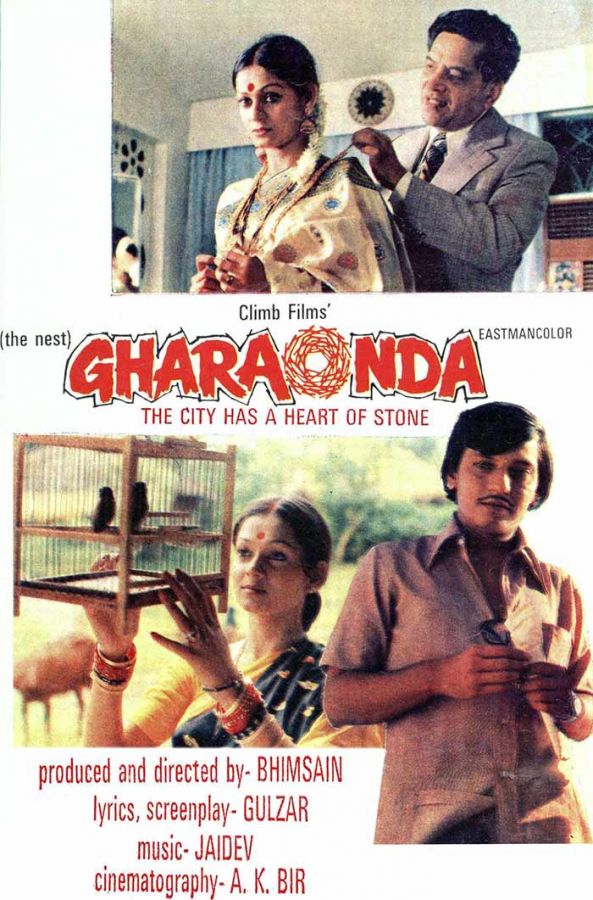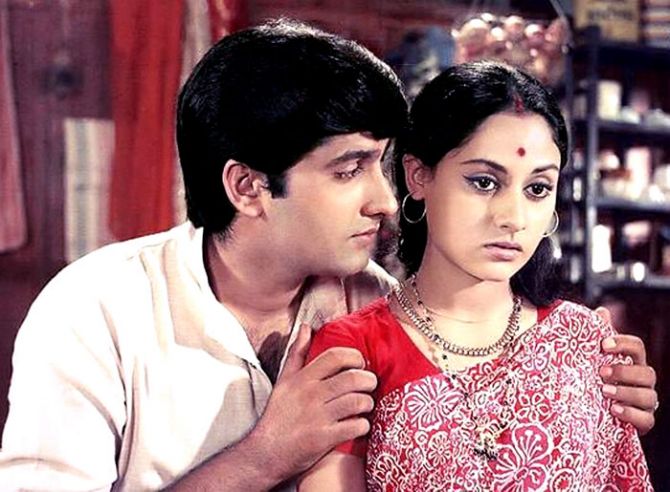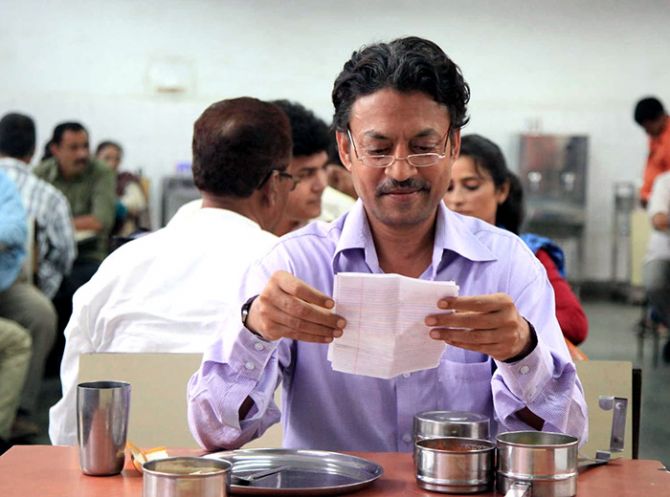Perhaps the most hardworking city in the country is done with the romanticism of austerity, of shared lives and living spaces, says Chandrima Pal.

Tumhari Sulu, the film starring Vidya Balan as the Mumbai housewife with an infectious can-do spirit, is being celebrated for getting many things in place. Not just the pitch-perfect depiction of an ordinary woman's extraordinary personal journey, but also the way it depicts a typical Mumbai home, down to the switchboards and the whistling pressure cookers.
The city's suburban living quarters has inspired filmmakers and photographers for decades.
From Sooni Taraporevala, to Dayanita Singh, Kundan Shah and Aziz Mirza to Ritesh Batra, the one BHK (bedroom-hall-kitchen) or one room-kitchen is one of the most instantly recognisable visual tropes for the city, other than the chawls and the local train.
Perhaps it has to do with the fact that no other city is as obsessed with the idea of 'space' as Mumbai, where it is always at a premium. Always hard won.
Where being at home means so much more than finding a roof over your head.

In Tumhari Sulu, Ashok and Sulochana and their son Pranav live in Virar, the distant Mumbai suburb that is synonymous with a near-violent local train commute.
It is a typical boxy apartment that has only a sliver of sliding windows by way of ventilation/views and space for laundry.
The swing, typical of many Mumbai households, is the woman's little space, where she sometimes dozes off in the afternoon while listening to the radio and shelling peas.
There is only one small dining table where the family eats, chats and the son does his homework.
And the other suburban Mumbai icon -- the sofa-cum-bed -- is where the kid gets to sleep at night and guests are entertained with tea and samosas.
It is perhaps a shade better than the chawls, where the working class lived for generations, where newly married couples got to sleep in the kitchen and privacy was never really a priority.
In fact in this film too, the only time that the parents can get intimate during the day is when they send the son away to his friend's place or on some errand.

How much has of the city's living conditions changed for the ordinary working lot?
In 1977, Gulzar wrote Gharaonda, a film starring Amol Palekar and Zarina Wahab that captured the essence of the Bombay mirage.
Palekar and Wahab are your regular middle-class working couple, who dream of getting married and moving into a small flat of their own.
They share their respective homes with flatmates and family and work hard to build a corpus for their ideal home.
Unfortunately, the builder turns out to be a con man and the young couple's dreams of starting a new life in a new home comes to a bitter end, as and so does their relationship.

Basu Chatterjee, one of the pioneers of Hindi new wave cinema, made a film called Piya Ka Ghar, starring Jaya Bhaduri and Anil Dhawan.
It was the story of a young girl from a village who gets married to young man in a large family living in a cramped room in a Mumbai chawl.
While grappling with the lack of privacy -- they fail at getting intimate in the tiny kitchen with paper thin walls -- space and the peculiar dynamics of the family, she comes to terms with how the 'city does not have enough place for everyone in its homes but there is always enough place for everyone in its heart'.
That was in 1972.

In recent times, The Lunchbox, starring Irrfan Khan, Nimrat Kaur and Nawazuddin Siddiqui, is set in three such homes -- they belong to different communities and are set in different neighbourhoods and socio cultural context.
But they are alike in their negotiations with space.
Everything that the three characters possess is about fitting into the nooks and crannies of their living quarters.
Delhiites or those from Bengaluru and Chennai often scoff at the Mumbaikar's ability to squeeze into the tiniest of spaces.
Those from the north, particularly, are critical about how an average Mumbaikar may be quick to befriend you, but will never invite you home. Something they cannot identify with.
Sometimes, they think Mumbaikars are too cold, a bit rude and stand-offish.
But the truth is, most of them do not entertain at home. Certainly not if they are sharing 230 square feet of space with five other people.

After generations of living this way, it is easy to see why the city is now besotted with the idea of exclusivity. Why it is ready to pay a premium for gated communities with exclusive access, plenty of privacy and windows that open to infinity pool and not your neighbour's kitchen.
Perhaps the most hardworking city in the country is done with the romanticism of austerity, of shared lives and living spaces.
In Tumhari Sulu, as Ashok grapples with his altered circumstances, he is often staring at a wall of glitzy high rises in a tony business district.
Every night, as the delightfully middle-class family turns in for the night, their modest housing colony is also overshadowed by the rising silhouettes of new high rises and their promise of a different life.
Chandrima Pal is the author of the recently released At Home in Mumbai: Stories From The City's Living Spaces. This is her second book, her first attempt at non-fiction.









